The onion stalk parasol (Leucocoprinus cepistipes) is a distinctive mushroom. It is bright white with a bell-shaped cap and often grows in gardens and parks, where it is highly visible. Many people affectionately call it the “Rest Stop Mushroom,” because it so often appears in the neatly landscaped areas at interstate rest stops. The elegant-looking onion-stalk grows across North America, and while it’s not edible, it is still a neat find.
- Scientific Name: Leucocoprinus cepistipes
- Common Names: Onion Stalk Parasol
- Habitat: Mulch, landscaped areas, flower beds, greenhouses
- Edibility: Not recommended
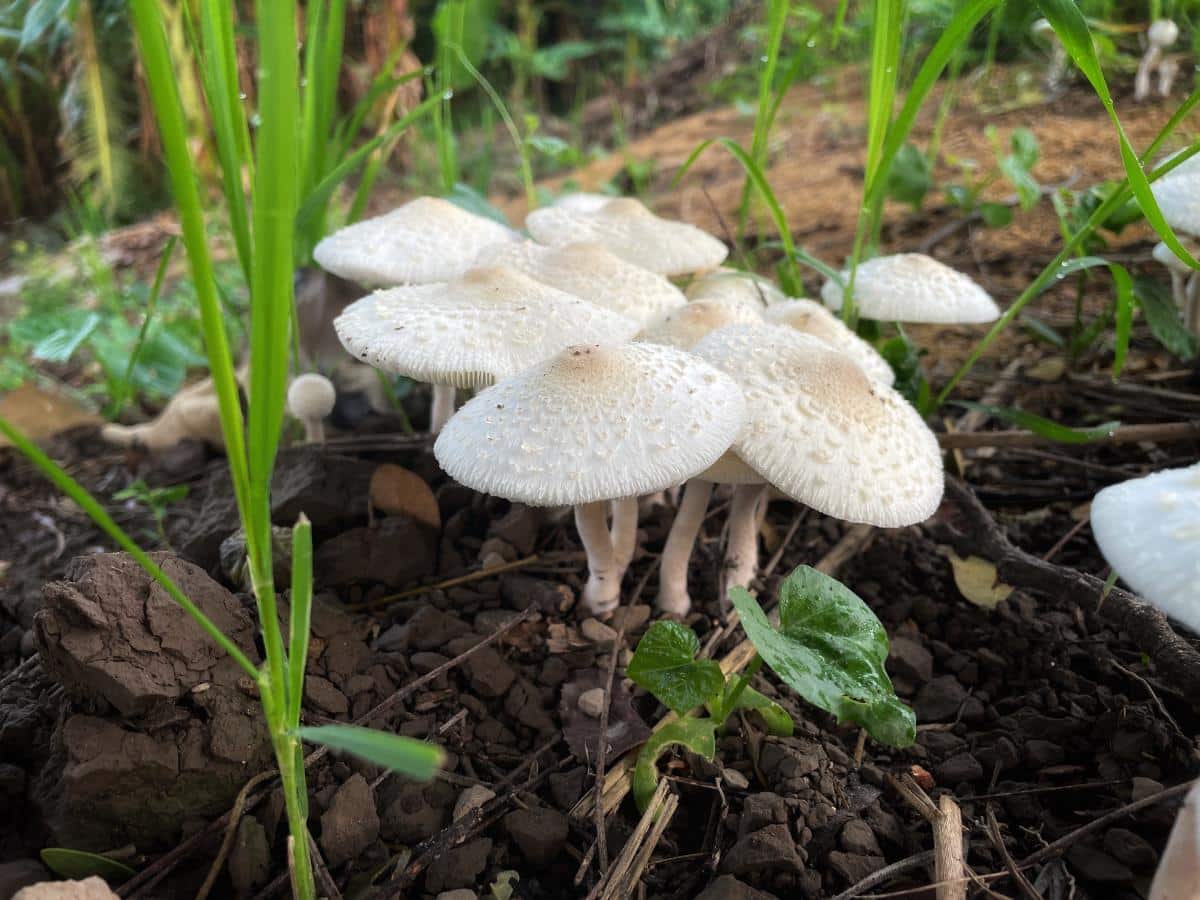
Jump to:
All About The Onion Stalk Parasol
This mushroom’s name stems from its distinctive appearance. The common name onion stalk parasol perfectly captures two defining features – the bulbous, onion-like base of its stem and the umbrella-shaped cap that looks like a parasol.
The genus name Leucocoprinus comes from Greek words meaning “white” and “dung.” This name is a reference to the mushroom’s typical white color and its distant connection to coprinoid mushrooms (which often grow on dung). The species name “cepistipes” comes from Latin roots: cepae meaning onion and stipes meaning stem. This refers to the mushroom’s swollen stem base.
The onion stalk mushroom has been reclassified many times over the years. You might still see it listed under Lepiota cepistipes. Some other older names include Agaricus cepistipes, Coprinus cepistipes, and Mastocephalus cepistipes. The species name can be spelled two ways – “cepistipes” and “cepaestipes.” Both spellings are fine. “Cepastipes” is wrong, though.
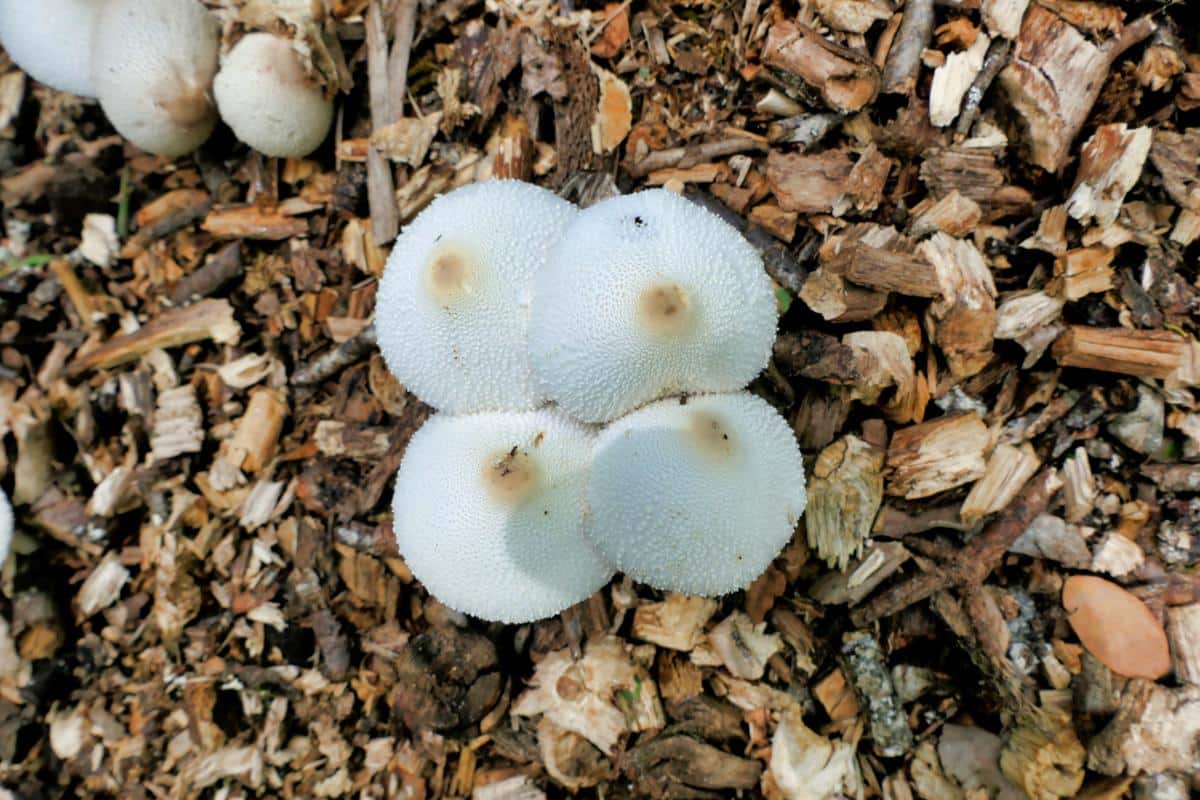
Onion Stalk Parasol Mushroom Identification
Season
These mushrooms appear from spring through fall across most of North America. Warmer areas see them year-round, even in winter.
Habitat
The onion stalk parasol tends to fruit in human-modified environments. It is most common found growing on wood chips and mulch beds in yards, gardens, flower beds, and greenhouses. People often call it the “Rest Area Mushroom” because it frequently shows up at landscaped interstate rest stops.
The mushroom grows on woody debris and well-rotted organic matter. However, it does not grow on trees or from logs. It grows singly, though it is often found in large, scattered, or dense groupings.
This mushroom has spread across North America. It fruits in the eastern United States, southeastern Canada, the Gulf Coast, the Pacific Coast, Central America, and northern South America. The mushroom also grows in parts of Europe, Asia, and Australia.

Identification
Cap
The onion stalk parasol’s cap grows about 1.2-3.5 inches across. The mushroom starts out with a narrow, egg-shaped cap with that cap tight to the stem. As it grows, it becomes rounded like a bell. The center of the cap usually has a distinct central bump called an umbo, which gives it a distinctive parasol (umbrella) shape. The cap often flattens completely as it ages.
This mushroom’s cap surface is dry and powdery, with soft, whitish granules all over it. The central bump is usually grayish-brown, which contrasts significantly with the whitish to pale brownish background of the rest of the cap. As it matures, the edge of the cap develops clear vertical lines (striations) around it, and it can split easily.
Gills
The gills are free from the stem—a crucial detail that helps identify this species. They are tightly packed, and there are often shorter ones mixed in between the longer ones. The gills start white but may turn pinkish or light brownish tones as they age.
Stem
The stem of the onion-stalk parasol is long and thin. It averages 2.4-3.5 inches long and measures about 0.16-0.4 inches thick. The stem is mostly uniform in width except for a slight bulge near the bottom, which creates that characteristic onion-like look.
Around the upper part of the stem is a white, bracelet-like ring. The ring tends to collapse quickly, though, and might vanish as the mushroom ages. The stem is hollow and smooth, and white. Over time, it gradually changes to yellowish, then pinkish to brownish shades as it ages.
Flesh and Bruising
The onion stalk parasol has thin, fragile flesh. The white, thin flesh does not change color when cut. The stem’s surface slowly turns yellowish, then pinkish to brownish when touched, though.
Taste and Smell
This mushroom has a mild, pleasant aroma that is barely noticeable unless the stem is cut. Its flavor is indistinct with possible subtle chemical or floral undertones, particularly in the cap. The stem tends to have a milder taste compared to the cap.
Spore Print
The spore print is white.
Key Features:
- Cap is egg-shaped when young, than bell shaped or parasol shaped with age.
- Cap that measures 1.5-4.5 inches broad.
- White to cream colored cap with small white scales that turn buff-brown as the mushroom ages.
- Center of the cap is brownish and usually upraised
- Striations along the cap edge.
- Stems turn yellow or yellow-brown with handling.
- White spore print
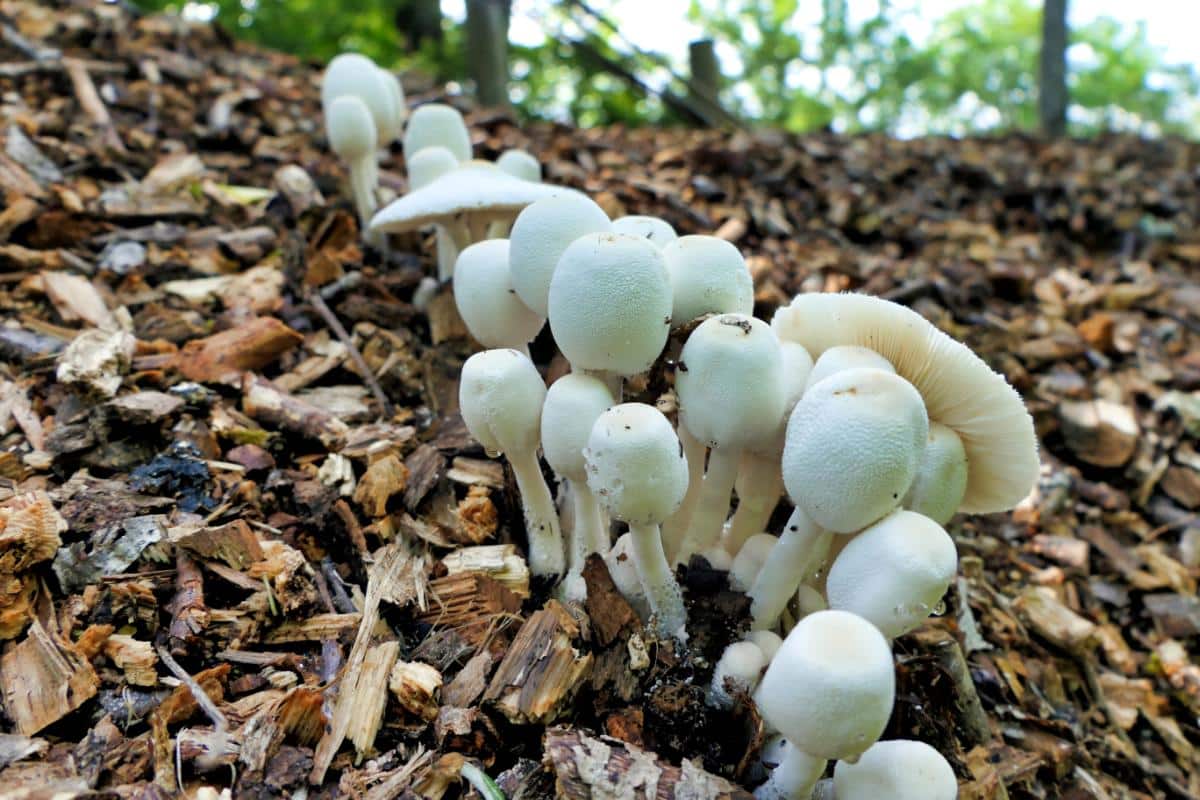

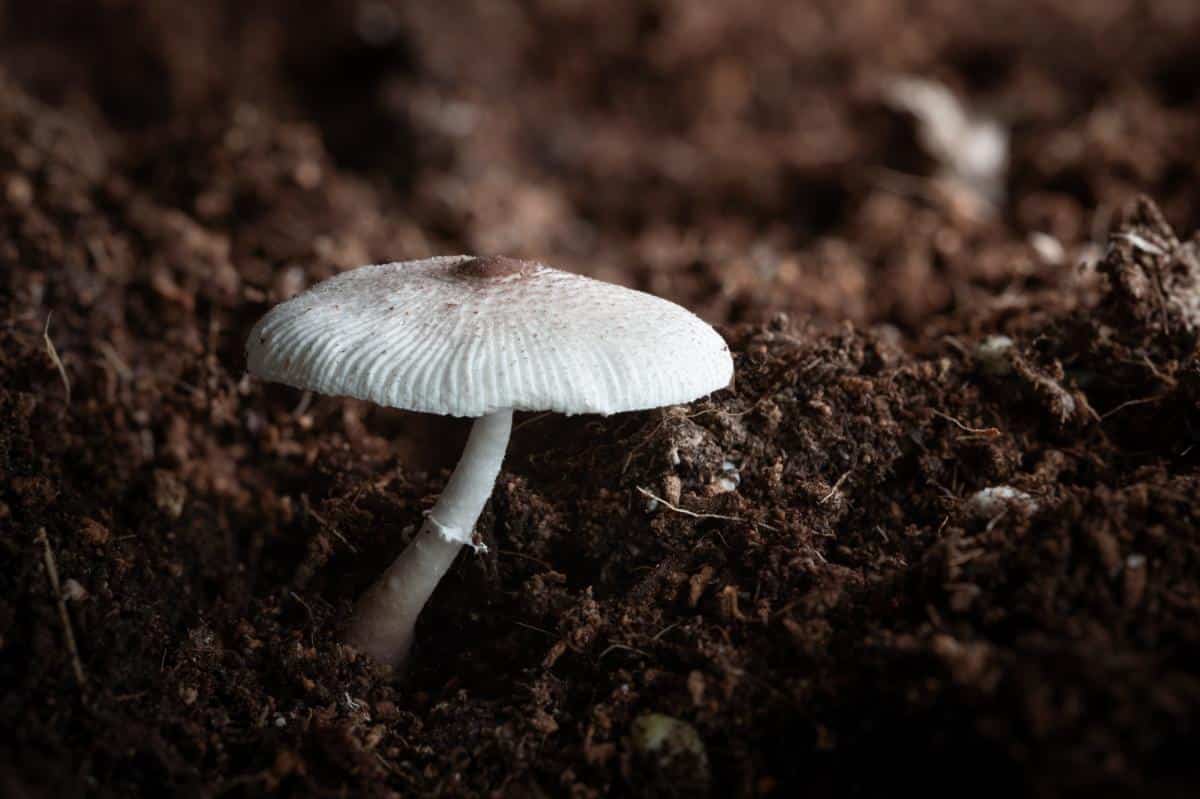
Onion-Stalk Parasol Lookalikes
White Greenhouse Mushroom (Leucocoprinus cretaceus)
Even experienced mycologists have struggled over the last several years to tell these two white Leucocoprinus species apart. Both mushrooms have bell-shaped caps, partial veils, and grow in similar places. The confusion between these species goes back to early taxonomic descriptions.
There are some key, although very fine, differences. The greenhouse mushroom has soft, wart-like scales on its cap, while the onion stalk parasol has more granular or powdery flakes on its cap. Depending on the age and condition of the mushrooms, this can be a hard feature to nail down. Heavy rains will wash away many of the distinctive features, and both species end up looking more alike. The onion stalk parasol also has a more prominent brownish central disk in the center of its cap.
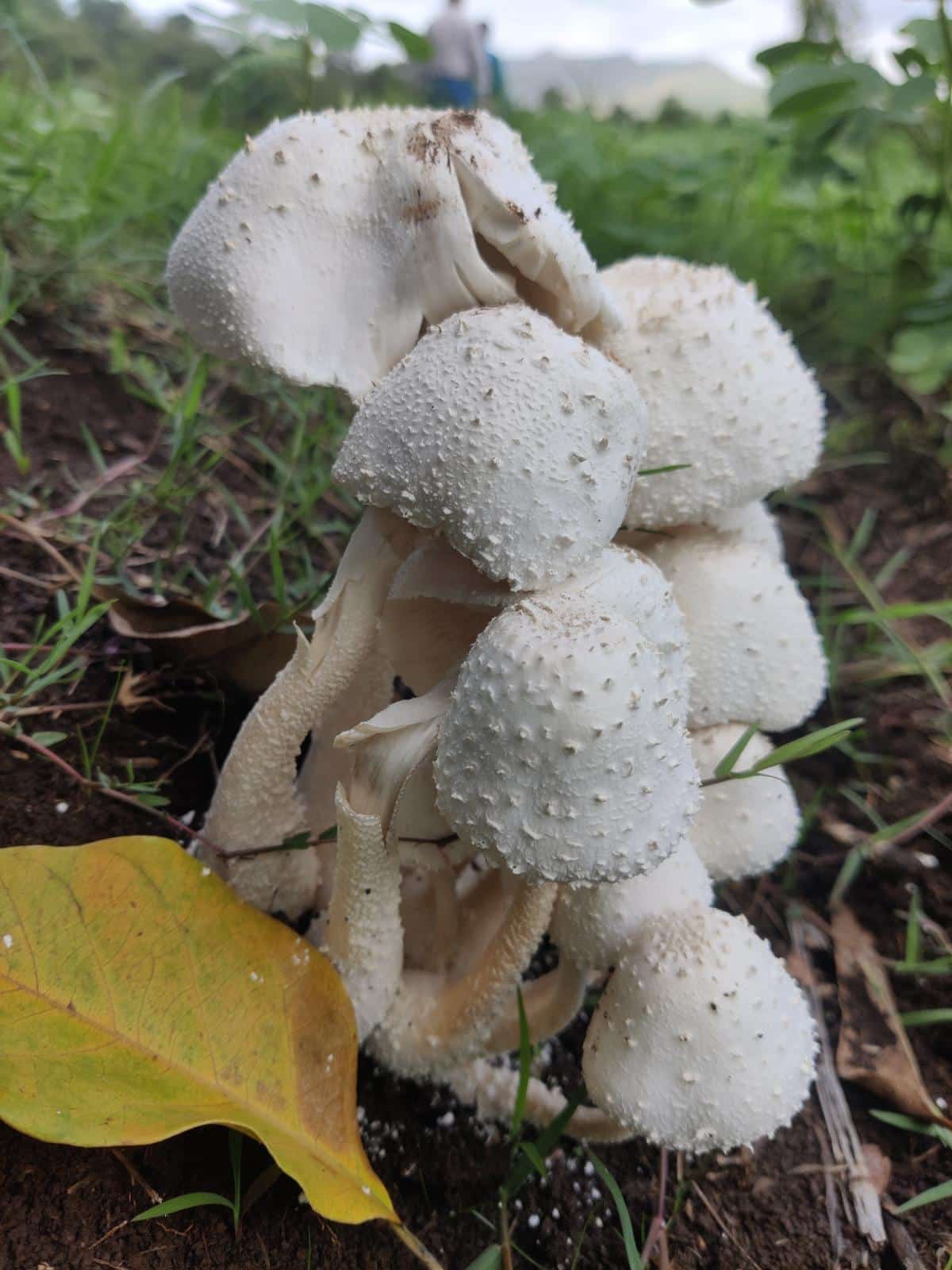
The stem is the most reliable way to tell these two lookalikes apart. Young white greenhouse mushrooms have noticeable soft scales on their stems, and the onion stalk parasol has a smooth stem surface. These mushrooms also grow in different places. The white greenhouse mushroom rarely appears in the wild in North America. It is a more tropical species that primarily grows in planters, potted plants, and greenhouses. The onion stalk parasol is more common outdoors.
However, in warmer regions of the United States, the greenhouse mushroom can also grow in wood chips and landscaped areas. In these places, telling the two apart takes some real attention to detail.

Chlorophyllum species
People often mix up Chlorophyllum species with the onion stalk parasol because their caps look similar. They are both tall white mushrooms with white caps adorned with scales or warts and long white stems.
The false parasol, Chlorophyllum molybdites, is a prime example. It grows very similarly to the onion stalk, but there are some key differences. Chlorophyllum species are much more robust, with long, dense stems and big caps. In general, they grow much bigger than the onion-stalk parasol and do not have hollow stems. The false parasol cap grows up to 11 inches wide. In comparison, the onion stalk only grows up to 3.5 inches across — that’s a big difference!
The color of the center disk on the cap also helps distinguish them. The false parasol has a more yellowish central disk compared to the brownish center of the onion-stalk mushroom. Chlorophyllum species also tend to have thicker rings around their upper stem.
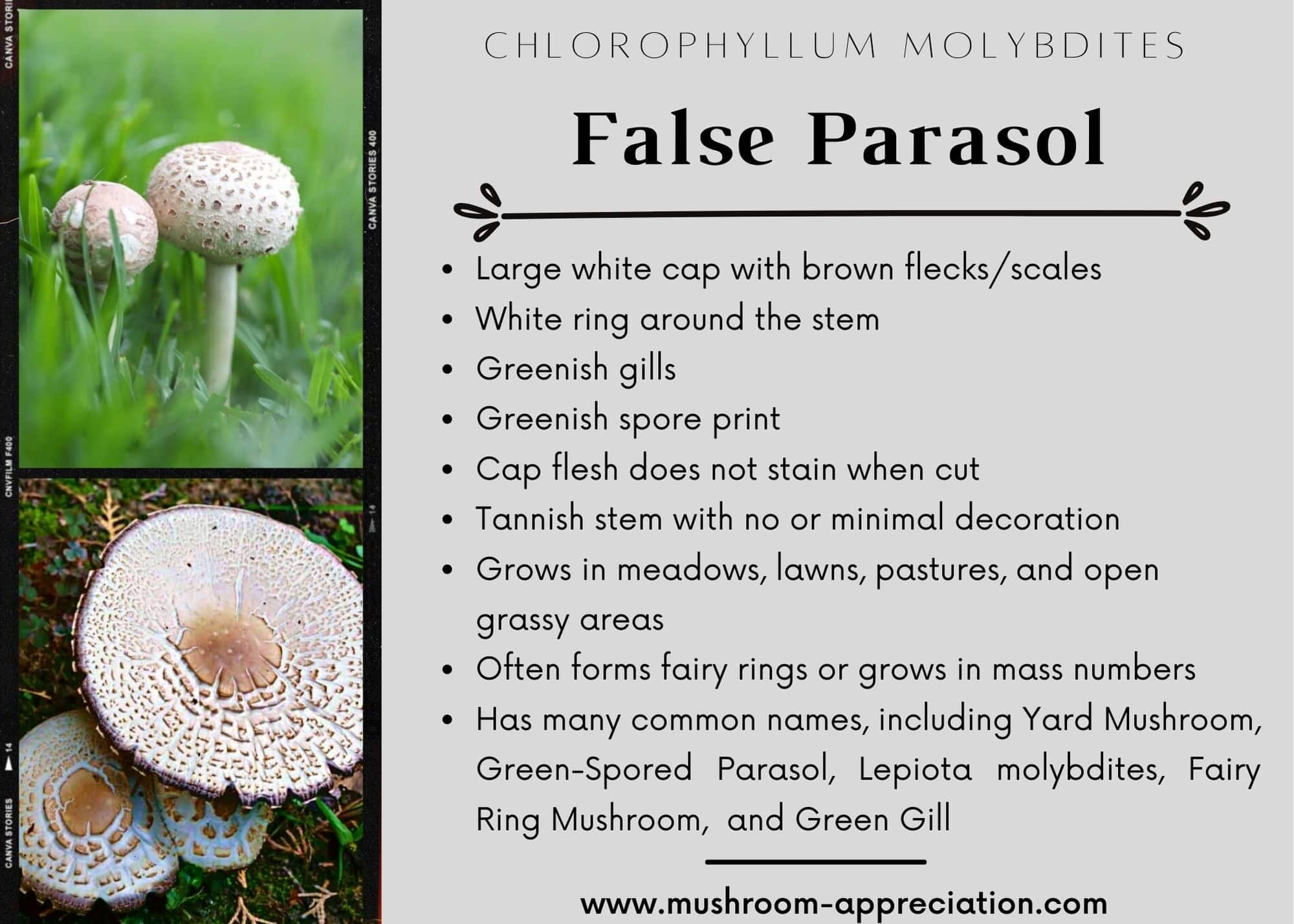

Yellow Houseplant Mushroom/Flowerpot Mushroom (Leucocoprinus birnbaumii)
The yellow houseplant mushroom might get mixed up with the onion stalk parasol simply because they are related and have similar features. It’s extremely easy to tell them apart, though. The yellow houseplant mushroom is extremely bright yellow, and the onion-stalk parasol mushroom is white, or sometimes very pale brown with age.
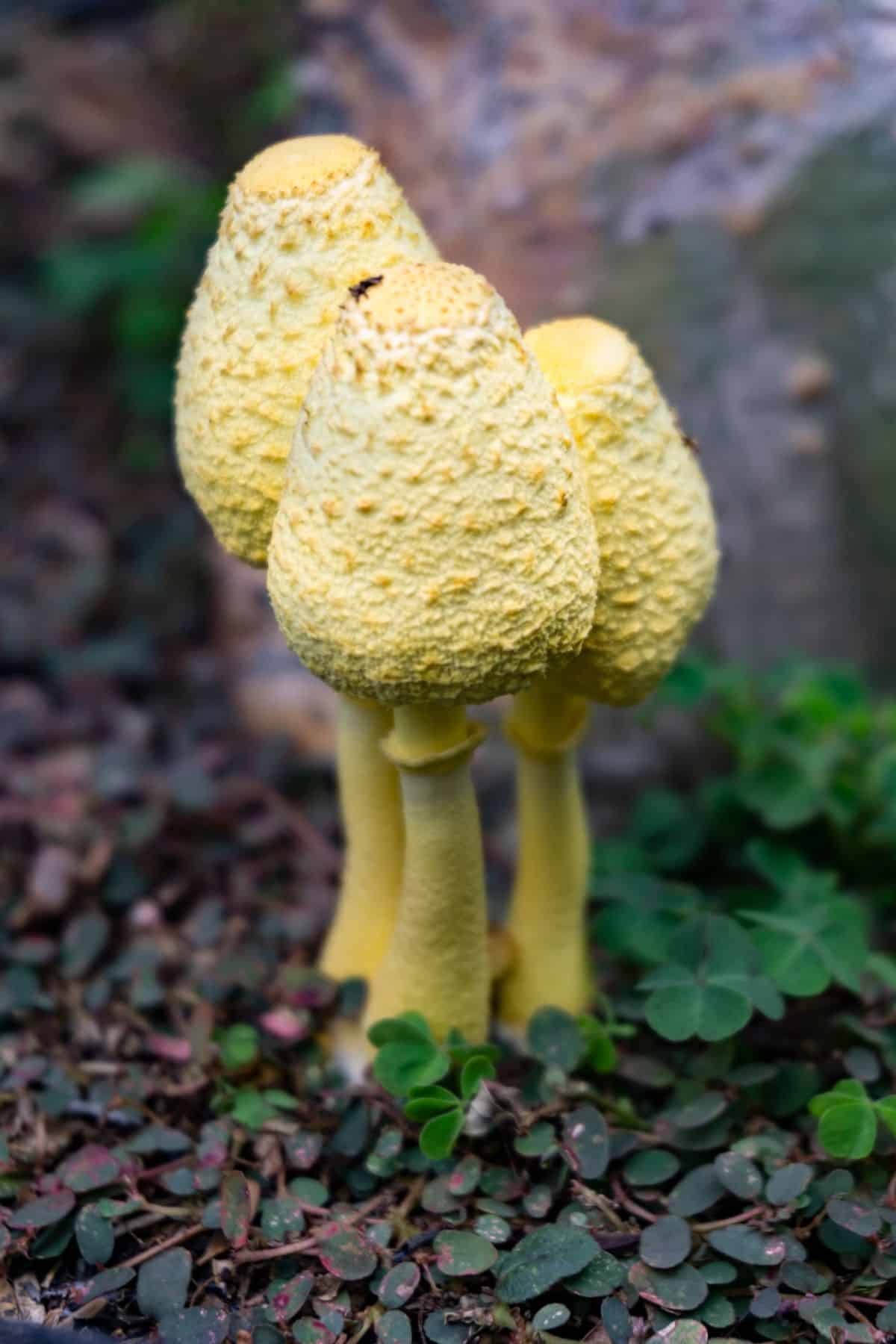
Shaggy Mane (Coprinus comatus)
The Shaggy mane is an edible species that looks outwardly similar to the onion-stalk parasol. But it only resembles it when it is very young and just emerging. They are both white with white granules on the cap and a white stem.
Shaggy mane caps also look like white eggs atop short stems when they are young. However, with maturity, it is easy enough to tell them apart. Shaggy mane caps grow oblong, not rounded like the onion stalk. They also deteriorate very quickly into gross, inky messes. If you see a bunch of tall white mushrooms melting into black goo, it’s a shaggy mane.
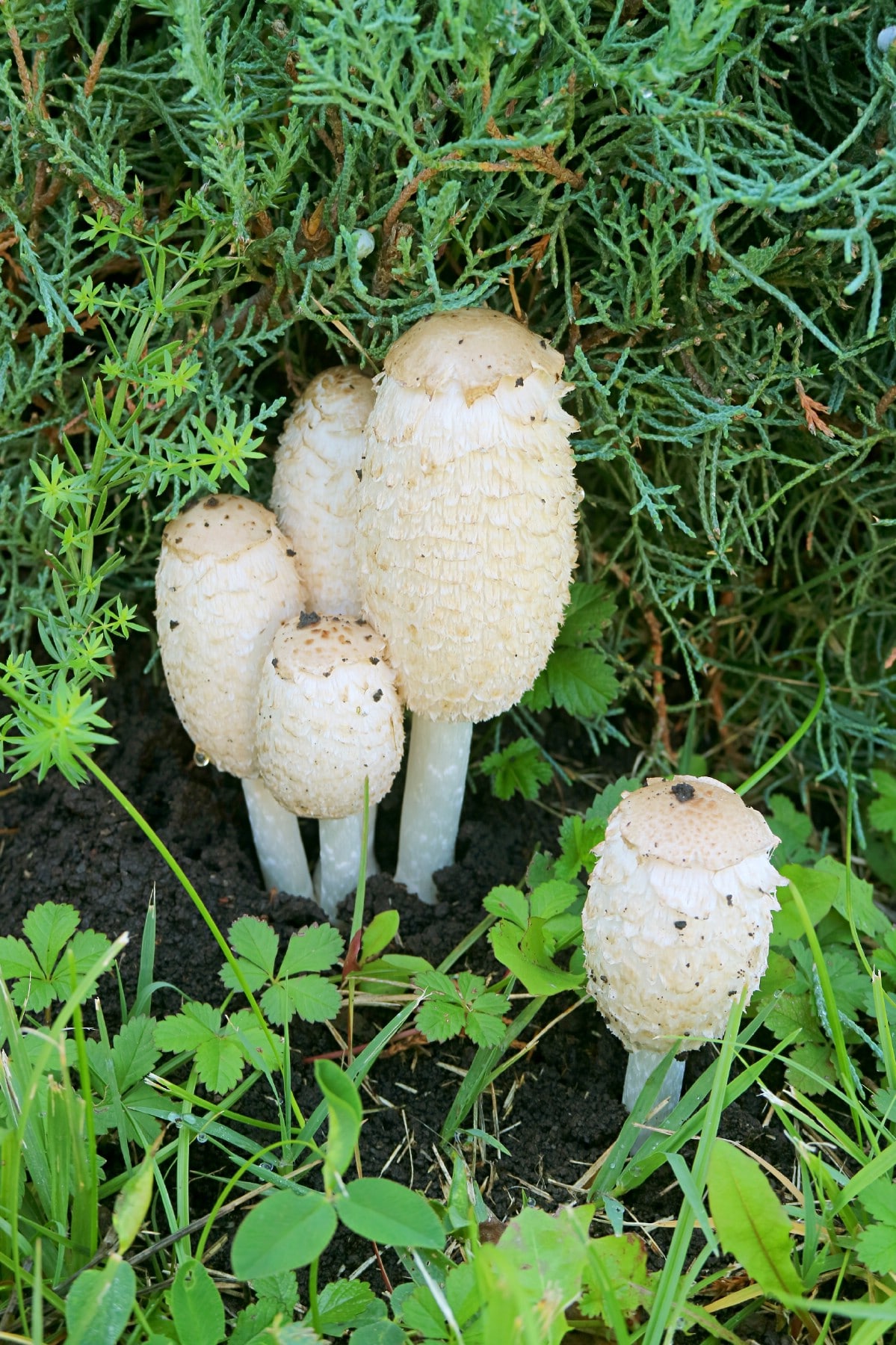
Thiers’ lepidella (Amanita thiersii/Saproamanita thiersii)
From a distance, this Amanita looks quite similar to the onion-stalk parasol mushroom, with the same white cap and white to light scaly granules on the cap. The main difference is that the cap and stem of A.thiersii is covered with shaggy and sticky white fibers from the universal veil. It also has a very distinctive white skirt around the upper stem, not a fragile ring. However, the skirt may deteriorate with age and not be visible.
In general, Thiers’ Lepidella is bigger, both in width and height, than the onion stalk parasol. It also has a thin cup (volva) around the base of the stem, which is something that the onion stalk never has. Finally, the gills on this Amanita remain whitish, even with age, while the onion stalk’s gills will turn dark yellowish and then brownish as it matures.
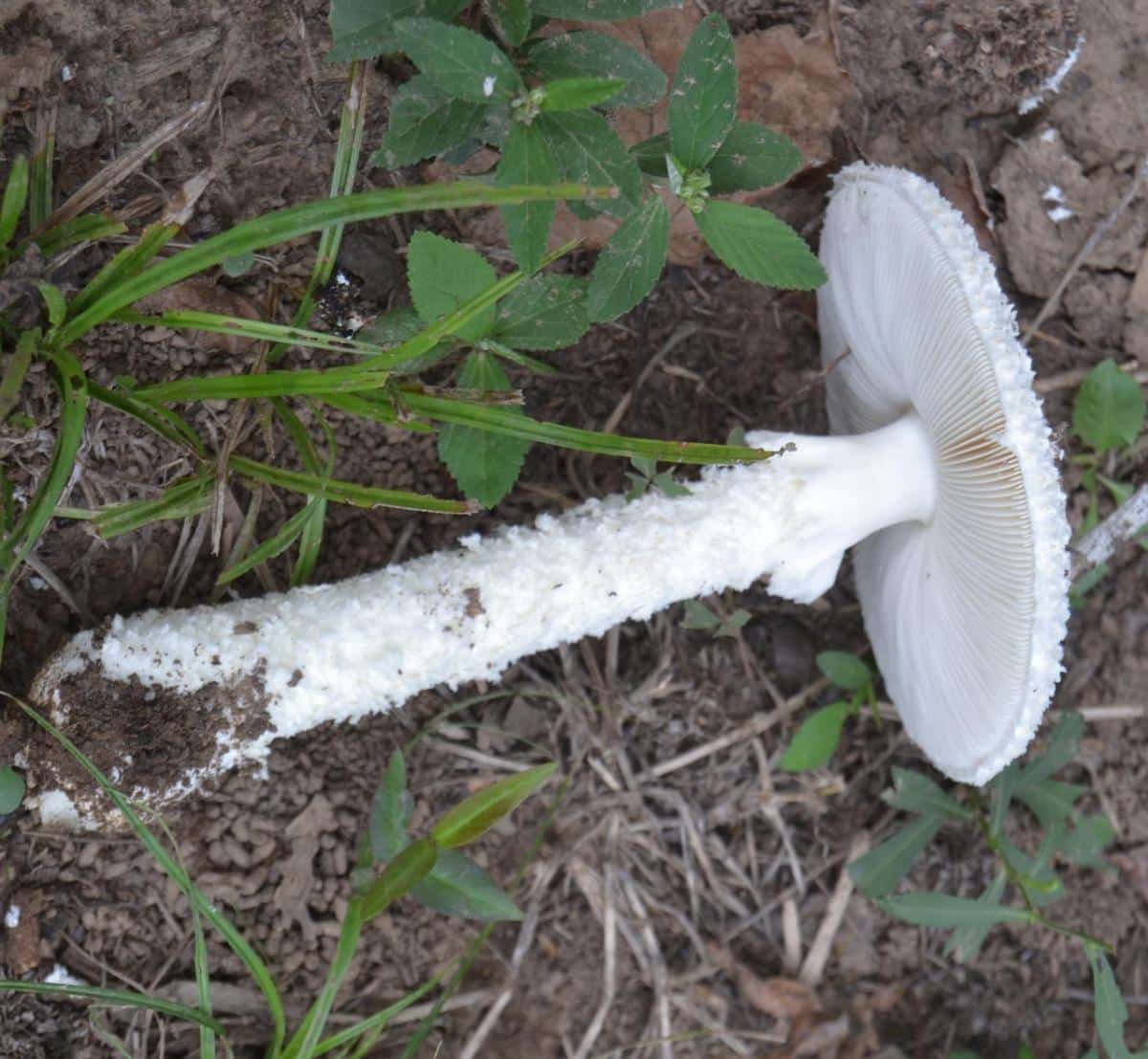
Onion Stalk Parasol Mushroom Edibility
This species is technically edible. Some references call it “maybe edible.” Most mycologists advise against eating it because it tastes bad and might pose health risks. It is not poisonous or deadly, though, just not enjoyable, and may cause gastrointestinal distress.
The onion stalk parasol won’t win any culinary awards, even if you can technically eat it. Most experts describe it as “not very palatable.”
The biggest reason to avoid eating this mushroom is the risk of mixing it up with poisonous lookalikes. The false parasol (Chlorophyllum molybdites) causes more poisoning cases in the United States than any other mushroom species. These risks make even seasoned foragers skip this species.
Common Questions About The Onion Stalk Parasol Mushroom
Is the onion stalk parasol mushroom safe to eat?
While technically edible, it’s not recommended. The mushroom doesn’t taste good and may cause gastrointestinal distress in some individuals. It is not known to be deadly, though. In addition, there’s a risk of misidentifying it with toxic lookalikes.
Where can I find onion stalk parasol mushrooms?
These mushrooms commonly grow in urban settings, particularly in wood chip mulch, gardens, and landscaped areas. They can also be found in greenhouses and occasionally in natural wooded areas, especially near stumps or deadwood.
When is the best time to look for onion stalk parasol mushrooms?
In most of North America, they fruit from spring through fall. In warmer regions, they may appear year-round. They often emerge rapidly after rainfall, particularly during late summer and early fall in many areas.
Is the Onion Stalk Parasol Medicinal?
Research has not shown any medicinal value for Leucocoprinus cepistipes.

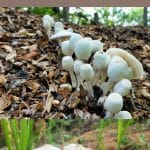
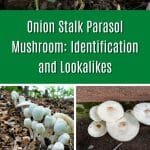


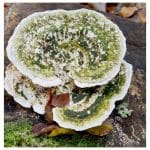
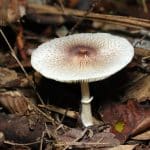


Leave a Reply